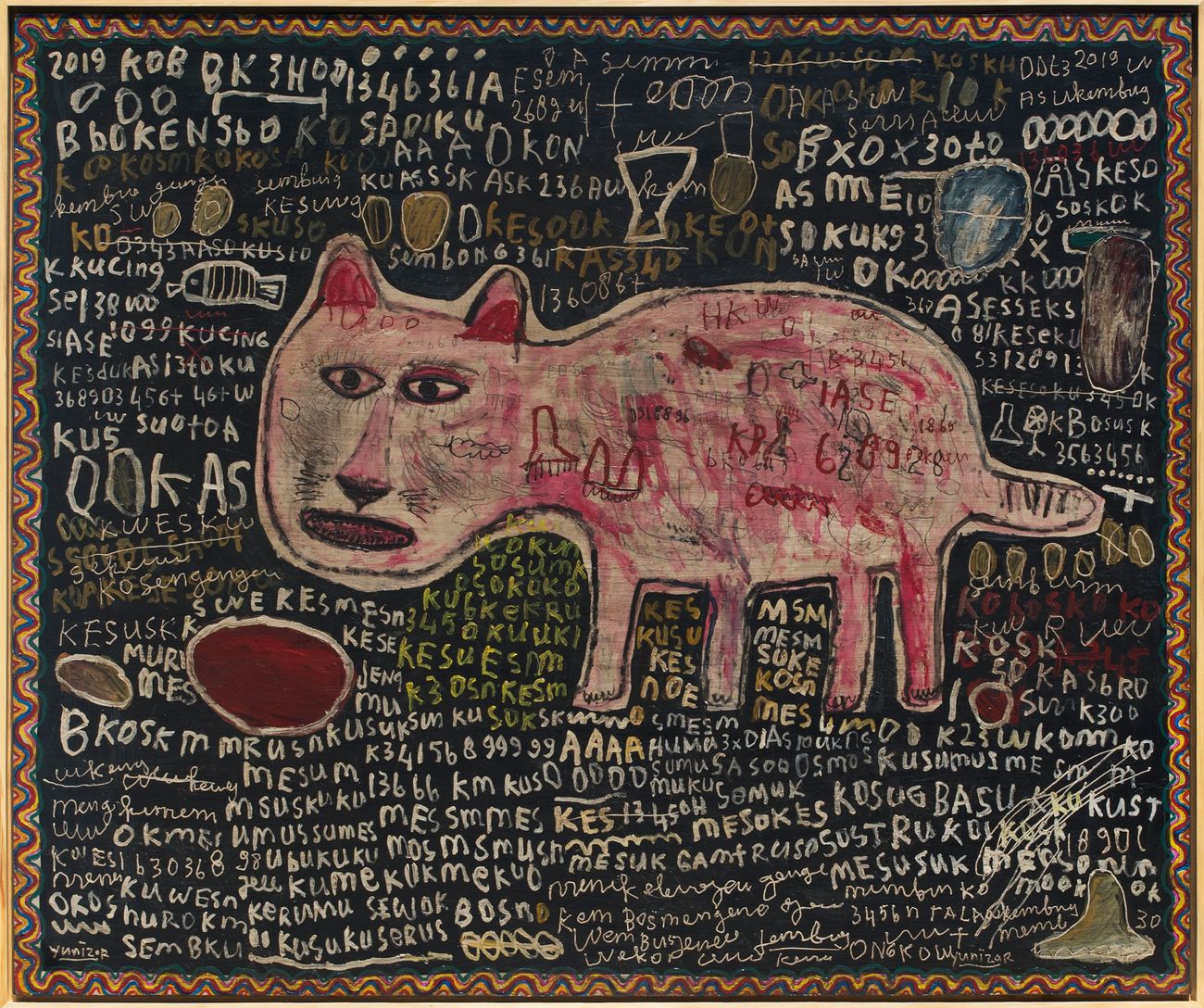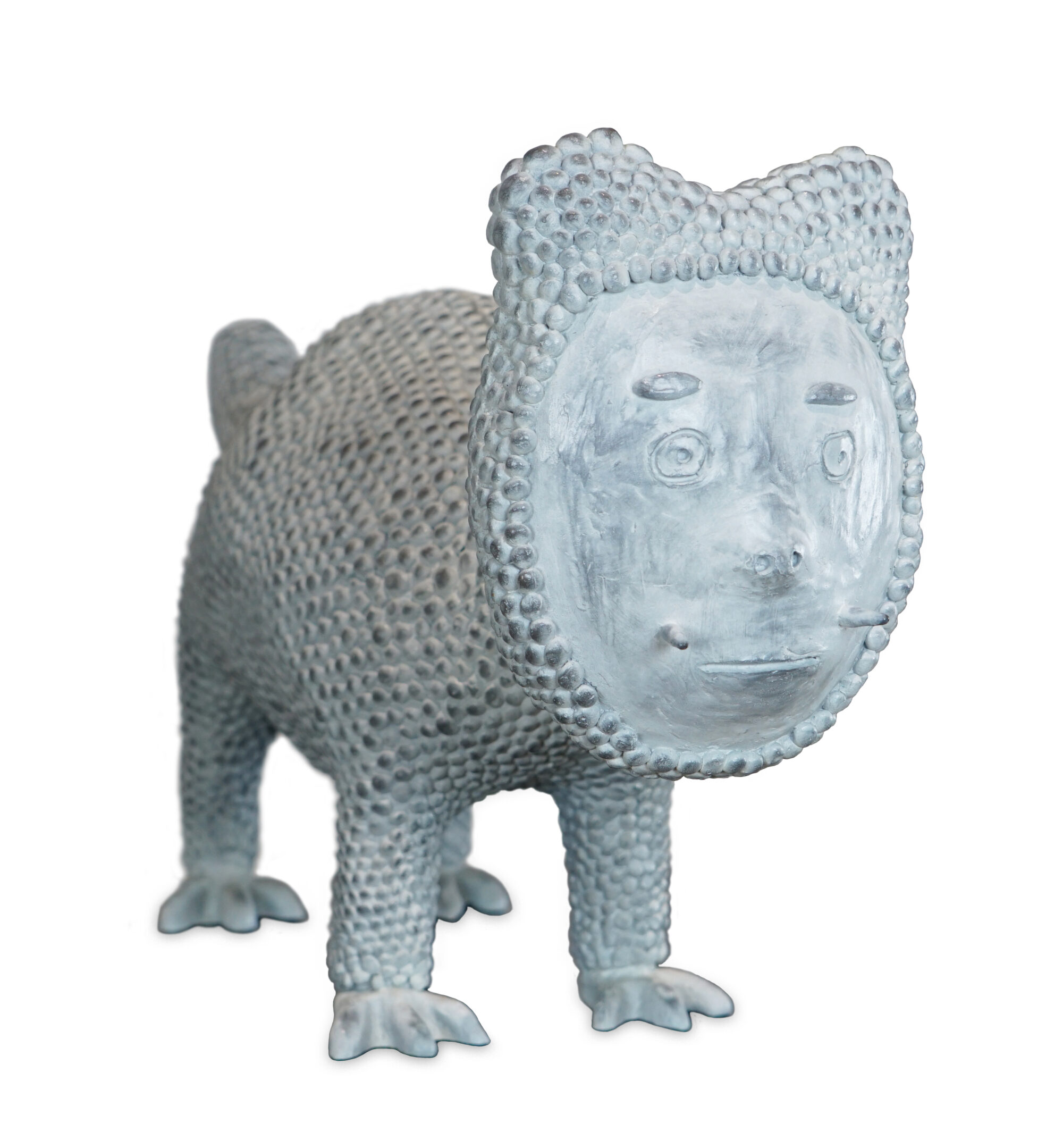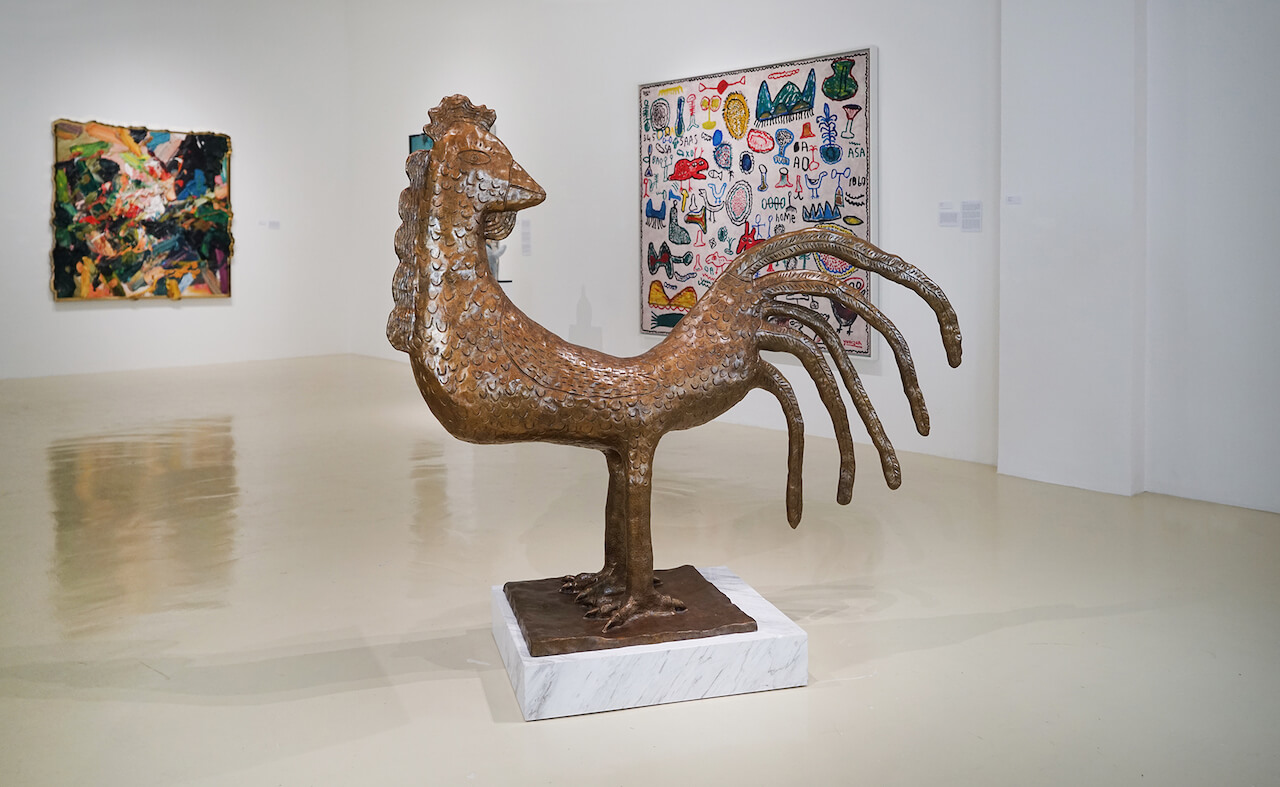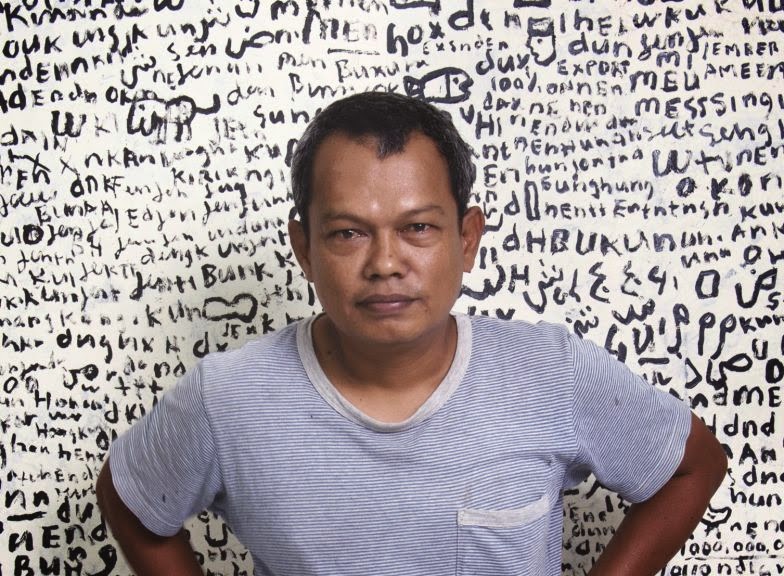


Yunizar
b. 1971, Talawi, West Sumatra, Indonesia.
Lives and works in Indonesia
Yunizar spent his formative years at the Indonesian Institute of Arts in Yogyakarta – a school of national pride in the heart of progressive art-making in Indonesia. Yunizar’s training reveals itself in his sophisticated expressive style, articulated through a playful composition and subtle palette. Executed primarily in acrylic and pencil, his works stand out in terms of texture, colour, brushwork and rhythm. A restrained palette of cool colours – yellows, browns and greens- is deliberately dirtied and smudged in his working and reworking of the canvas. The result is a highly tactile work that entices the viewer to feel the piece.
Coretan, Yunizar’s solo exhibition at the National University of Singapore Museum in 2008 became the cornerstone of the artist’s signature style. The repetition and technique in scribbling marks a desire for meaning to be limitless in perspective. The spontaneous lines are a reflection of the artist’s inhibition with the constricting form both text and image sometimes takes. The works are composed of illegible scribbling in lines across the canvas, appearing as fragments of text that struggle to find form or intelligent representation. Working with limited colour, mostly monochromatic, his works reveal a play of lines and textures coming together to create clear rhythms and strong composition. The simplicity of visual elements within his works, according to Yunizar, is the result of a personal aesthetic judgment. He seeks beauty, especially in the trivial and in what is deemed by all else as useless and unimportant. To capture intuition and impulse, that is the great aim of the artist.
Also, there is a long history of oral traditions or Sastera Lisan within the Minangkabau culture. A need to seek narratives in its various forms has always been at the center of the pidato adat (ceremonial orations) which is at the heart of the Minangkabau culture. This is evident in the ‘Coretan’ series, where the method space used is crucial to narrative. The position of poetic prose within the swirl of lines overwhelming the canvas belongs to a need to release self from the outlines of what has been constructed before. There is an unwillingness to allow the silence to form markers that leave the audience with a contained reading. Instead, the abstraction acts as a sensation without an end.



